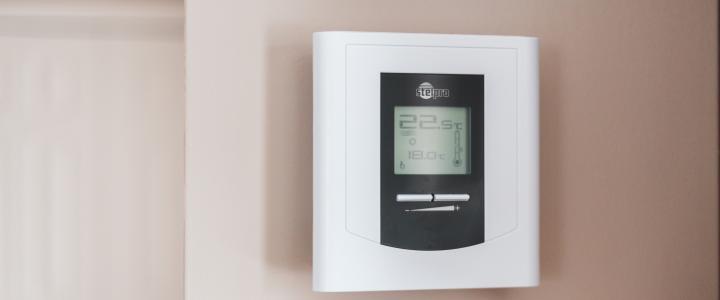
October 2022: Go Ahead, Turn Down That Thermostat!
As we inch closer to winter, many of us have home heating costs on our mind: How much is it going to increase? And what can I do about it? Well, while we can’t individually control energy and fuel prices, there are things we can do to reduce energy usage related to heating our homes. In fact, there’s one simple thing you can build into your routine that will help: turn down your thermostat while sleeping or not at home.
There has long been debate about whether turning your thermostat down low actually saves money and energy. You may have heard the claim that the energy a furnace or boiler expends starting and stopping is more than if the device maintains a steady temperature. However, that conventional wisdom actually doesn’t bear out: The amount that you can save by turning the thermostat down during the times that you’re not benefitting from the heat vastly outweighs that startup energy consumption. In fact, the opposite can be true. When recovering from a setback, the burner spends more time running in the “optimal combustion efficiency zone,” delivering more energy to your home with fewer emissions.
According to the U.S. Department of Energy, you can save as much as 10% a year on heating by simply turning your thermostat back 7 to 10 degrees for eight hours a day from its normal setting. During winter, the lower the temperature inside your home, the slower the heat loss, so if you can keep the temperature lower for long periods of time – like when you are sleeping or at work – you will save more energy and reduce your heating bill. You can easily save energy in the winter by setting the thermostat to around 68°F while you're awake and setting it lower while you're asleep or away from home.
If you have a programmable thermostat or the means to get one, this type of routine savings can be even easier. You can set it as low as is comfortable in the winter and then lower the setpoint when you're sleeping or away from home. Some smart thermostats even have occupancy sensors and will set back automatically when the home is empty.
Turning down your thermostat is just one way to save on energy and heating costs in your home. Here are some others:
- Reverse your ceiling fans to bring that warmer air circulating around your home down.
- Replace your furnace’s filter regularly to save electricity.
- Seal up any leaks or holes; this saves an average household $166 annually. Prioritize the ABCs: Start in the Attic, then Basement, then the Center of your home.
- Ensure that any heat sources can deliver heat without restriction. Furniture can block both forced air vents and baseboard heat or radiators.
- Put some area rugs in your rooms. This will improve comfort without turning up the thermostat.
- During winter, keep the draperies and shades on your south-facing windows open during the day to allow the sunlight to enter your home and closed at night to reduce the chill you may feel from cold windows.
Overall, reducing your heat usage is a great way to save on costly bills and to be more eco-friendly. In areas like New England, where the winter months are cold, heating accounts for 30% to 50% of a household's annual energy costs. Additionally, home heating and cooling is responsible for nearly 441 million tons of carbon dioxide annually.
So don’t be afraid to see how low you can go on your thermostat dial!




